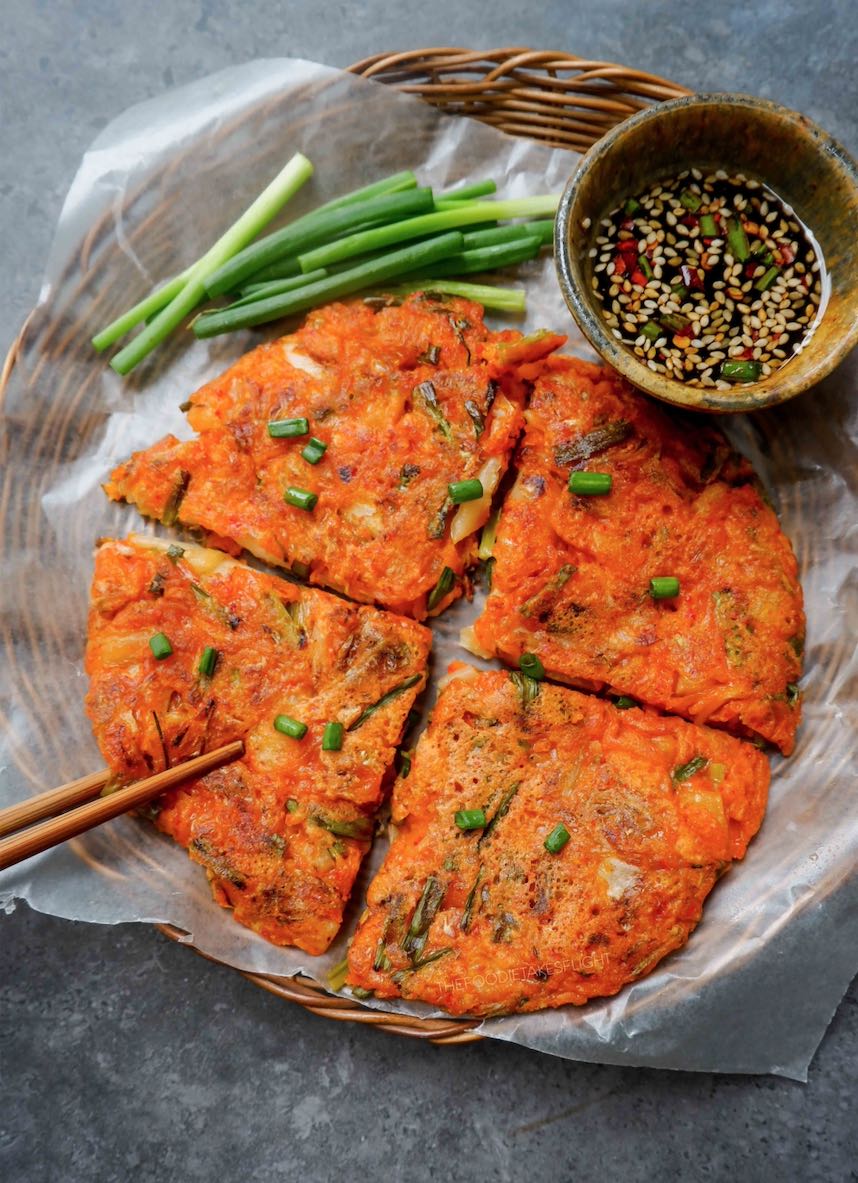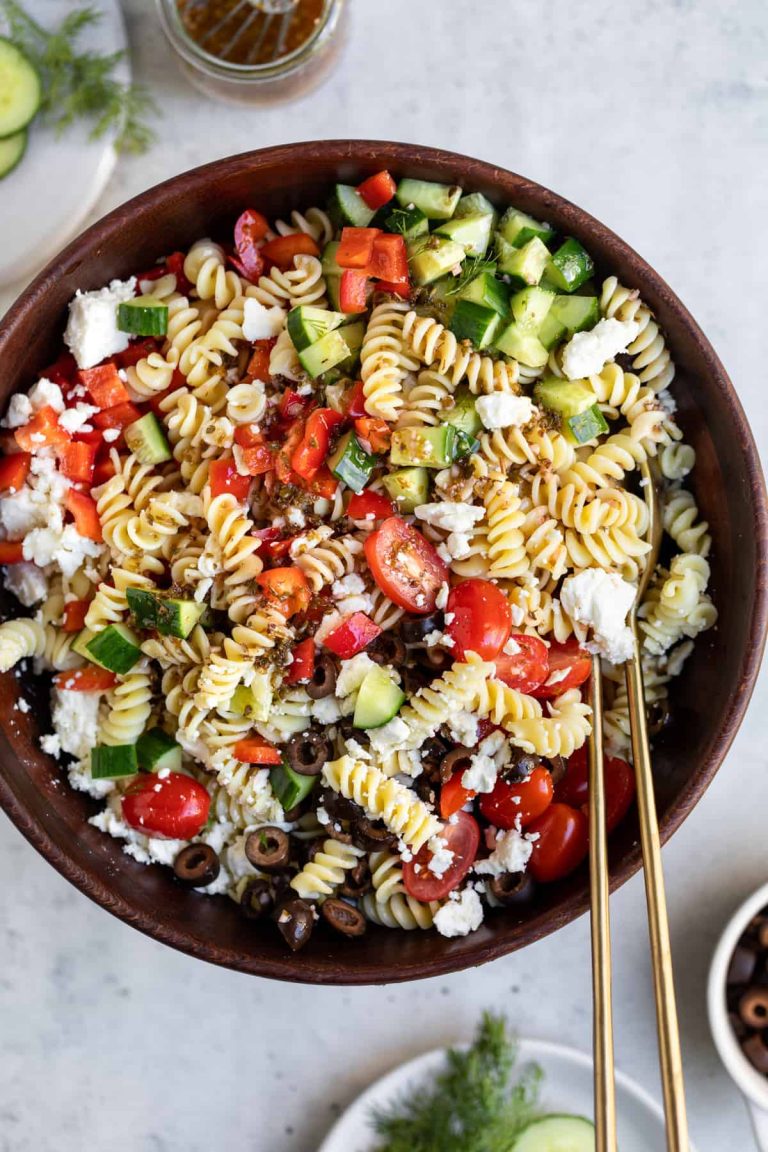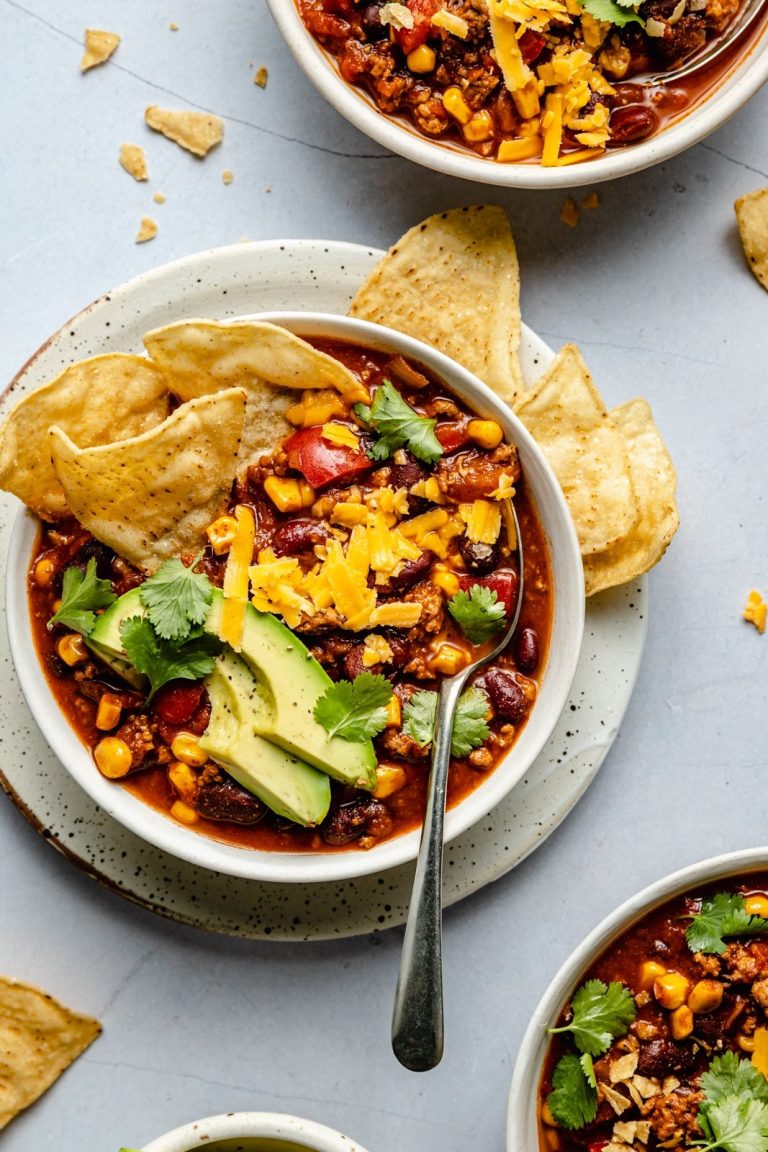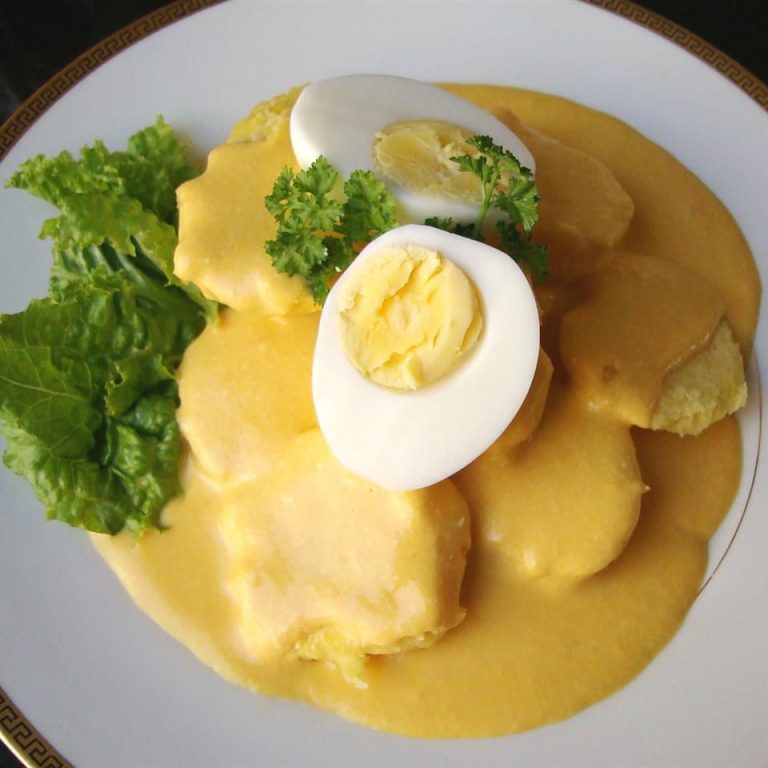Kimchi Pancakes: Recipe, Pairings, and Health Benefits
Kimchi, a staple in Korean cuisine, dates back to around 37 BCE. Fermented vegetables, usually napa cabbage and radishes, make up kimchi. Traditional preparation involves salting the vegetables, then fermenting them with gochugaru (Korean chili powder), garlic, ginger, and jeotgal (salted seafood). Every Korean family has its unique recipe passed down through generations. Kimchi plays a crucial role in Korean meals, often served as a side dish or used in various recipes like stews, soups, and, of course, pancakes. It’s revered for its health benefits, including probiotics, vitamins A and C, and antioxidant properties.
Evolution of Kimchi Pancakes
Kimchi pancakes, or kimchi jeon, emerged as an ingenious way to use leftover kimchi. The basic ingredients include flour, water, and kimchi mixed to create a batter, then fried until crispy. Their creation leverages the unique, tangy taste of fermented kimchi, adding depth and vibrant flavor compared to plain pancakes. As kimchi gained international popularity, so did kimchi pancakes, evolving into various versions globally. Variations include adding ingredients like scallions, seafood, or pork, enhancing the flavor profile and catering to different palates. Kimchi pancakes symbolize culinary innovation, harmonizing ancient traditions with modern tastes.
Key Ingredients in Kimchi Pancakes
Importance of Well-Fermented Kimchi
Well-fermented kimchi is crucial for making kimchi pancakes. It provides the essential tangy and spicy flavors that define this dish. Fermentation time varies, usually between a few days to several weeks, depending on personal preference and storage conditions. As kimchi ferments, lactic acid bacteria flourish, enhancing its sour taste and health benefits. Using kimchi that hasn’t fermented long enough might result in bland pancakes, while overly fermented kimchi can overwhelm the dish with sourness.
Additional Flavor Enhancers
Several additional ingredients enhance the flavor profile of kimchi pancakes. Scallions add a fresh, mild onion taste. Seafood options like shrimp or squid contribute a savory depth, while pork lends a rich, hearty flavor. To balance the tanginess of the kimchi, a touch of sugar can be added. Sesame oil imparts a nutty note, and garlic enhances the overall spiciness. Flour and water create the batter, providing the necessary structure and crispness. Each of these ingredients complements the kimchi, creating a harmonized, flavorful pancake.
Step-by-Step Recipe for Making Kimchi Pancakes
Preparing the Kimchi Batter
Combine your well-fermented kimchi with its liquid in a large bowl. Aim for approximately 1 cup of chopped kimchi and 2 tablespoons of kimchi juice. The kimchi juice enhances the batter’s depth of flavor.
Add 1 cup of all-purpose flour to the bowl. Stir gently to avoid overmixing. Overmixing can make the pancakes tough.
Incorporate 1/4 cup of cold water. Adjust the water quantity if the batter appears too thick or thin. The batter should be pourable but not runny.
Include 1 egg to help bind the ingredients. Stir until the mixture becomes smooth and consistent.
Enhance the batter with 1/2 cup of chopped scallions and other preferred additions like seafood or pork. These ingredients enrich the texture and taste of the pancakes.
Season the batter with 1/2 teaspoon of sugar and 1 teaspoon of sesame oil. These additions balance the kimchi’s tanginess and spiciness.
Cooking Techniques for Perfect Crispiness
Heat a non-stick skillet over medium-high heat. Add 2 tablespoons of vegetable oil to ensure an even fry.
Pour a ladleful of batter into the skillet. Spread it out to form a thin, even layer. Thin layers achieve a crisper texture.
Cook for 2-3 minutes on each side, flipping when the edges turn golden brown. Press down gently with a spatula to ensure even cooking.
Remove the pancake once both sides are crispy and golden. Drain on paper towels to remove excess oil.
Repeat with the remaining batter, adding more oil as needed. This keeps the pancakes from sticking and maintains crispiness.
Serve immediately with your favorite dipping sauce. Popular choices include soy sauce mixed with rice vinegar and a dash of sesame oil.
Serving and Pairing Suggestions
Best Dips and Sauces for Kimchi Pancakes
Complementing kimchi pancakes with the right dips and sauces enhances their flavor. You’ll find soy sauce-based dips to be classic choices. Soy sauce combined with rice vinegar and a touch of sesame oil creates a simple yet savory dip. Adding minced garlic and chopped scallions to this mixture boosts its flavor.
Gochujang sauce, a staple in Korean cuisine, brings a sweet and spicy kick. Mix gochujang with honey and apple cider vinegar for a balanced, flavorful dip. Another popular option is to use a dipping sauce made from a blend of soy sauce, gochujang, and a bit of sugar. This combination adds depth and complexity to the taste of the pancakes.
Korean BBQ sauce, though less traditional, works well with kimchi pancakes. Brush a light layer on the pancakes before serving to introduce a smoky, savory note. These sauces not only enhance the flavor but also preserve the crispy texture of the kimchi pancakes.
Ideal Side Dishes
Pairing kimchi pancakes with the right side dishes creates a well-rounded meal. Banchan (small Korean side dishes) offers variety and balance. Common banchan includes pickled radishes, seasoned spinach, and spicy cucumber salad. These dishes provide a refreshing contrast to the rich, savory pancakes.
Consider serving a bowl of steamed rice alongside the pancakes. The rice helps balance the strong flavors of the kimchi and dips, creating a harmonious meal. Another excellent option is a light soup, such as a clear broth made from anchovies and seaweed. This cleanses the palate between bites.
For a heartier meal, add a protein-rich dish like bulgogi (marinated beef). The tender beef pairs well with the crispy texture of the kimchi pancakes. Japchae (Korean glass noodles with vegetables) introduces another texture and flavor, creating a satisfying and balanced dining experience.
Health Benefits of Kimchi Pancakes
Nutritional Components of Kimchi
Kimchi, a staple in Korean cuisine, offers a wealth of nutrients. It contains vitamins A, B, and C, helping boost immunity. The fermentation process also produces probiotics that promote gut health. Kimchi is rich in antioxidants, reducing inflammation and combating oxidative stress. Minerals like calcium, potassium, and magnesium support bone and cardiovascular health.
Dietary Contributions of the Pancakes
Kimchi pancakes blend these nutritional benefits with additional ingredients like flour, eggs, and green onions. The eggs provide protein, aiding muscle repair and growth. Adding green onions supplies fiber, further enhancing digestive health. These ingredients make kimchi pancakes a balanced dish, suitable for various dietary needs.
By combining kimchi’s probiotic advantages with the protein, fiber, and vitamins from other ingredients, kimchi pancakes offer a nutritious meal option that supports overall health.
Conclusion
Kimchi pancakes are more than just a tasty treat; they’re a fusion of flavor and nutrition. With the right balance of well-fermented kimchi and complementary ingredients, you can create a dish that’s both crispy and delicious. Pair them with your favorite dips and side dishes for an even more enjoyable experience.
Incorporating kimchi pancakes into your diet not only satisfies your taste buds but also supports your health. The probiotics, vitamins, and minerals in kimchi combined with the protein and fiber from other ingredients make this dish a well-rounded nutritional powerhouse. Whether you’re looking for a quick snack or a hearty meal, kimchi pancakes are a versatile and healthful option.






